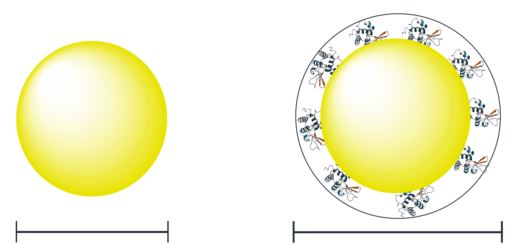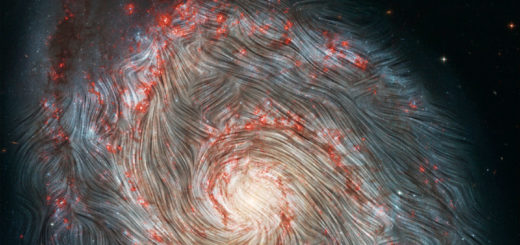How to go out and watch the first galaxies over 12 billion years ago
From Light to Dark & back to Light – A brief history
At some point after the Big Bang the hot plasma opaque to light had cooled down enough so that during Recombination, electrons and protons combined to form neutral hydrogen. As a result light (photons) could now travel freely through the Universe (observed by us as the Cosmic Microwave Background). After Recombination, neutral hydrogen makes up the majority of the (baryonic ‘every-day’) matter in the Universe, and no elements heavier than lithium have formed yet. But structures (i.e. density peaks in baryonic and dark matter) continue to collapse, form, and become more pronounced. After these so-called ‘Dark Ages’ when the Universe was dark and neutral without significant sources of radiation, the first stars and galaxies are supposed to have formed just a couple of hundred million years after the Big Bang. These galaxies are made up of stars radiating and the gaseous medium between. They end the Dark Ages by illuminating the Universe at Cosmic Dawn. With more and more radiation pervading larger and larger volumes, the before neutral hydrogen becomes ionized. Ionized regions or bubbles in the intergalactic gas expand, until they eventually overlap, and the Universe becomes fully ionized again. When this process of Reionization concludes more than 12 billion years ago, the image we see already looks much similar to our transparent present-day Universe filled with bright galaxies.
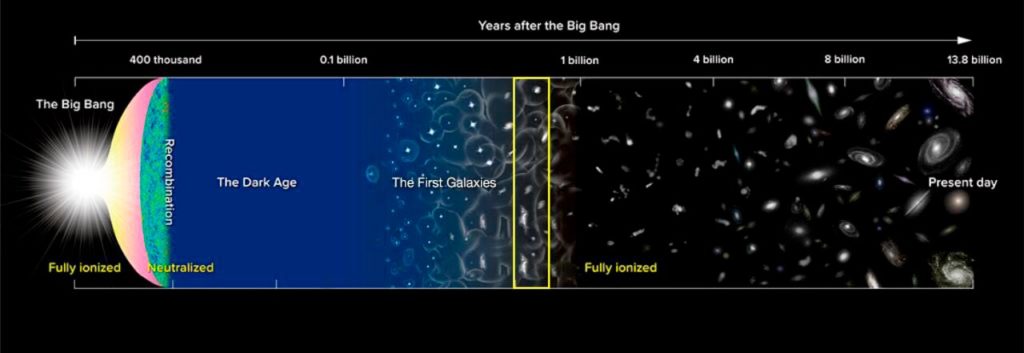
Credit: NAOJ, Creative Commons Attribution 4.0 International License
Why is it the Universe is transparent now after Reionization, but was opaque before Recombination, when at both epochs it was filled by an ionized plasma? (mostly, as we are not plasma)
As compared to the ionized plasma before Recombination, scattering of photons off electrons is just much less frequent as in the meantime the Universe expanded, leading to much lower densities and less light-electron interactions.
Our (current) limits to image single galaxies
The tip of the iceberg
Going back in time, or to larger redshifts in astronomer’s and cosmologist’s terms, we need more and more resolving power in order to pick up the light from galaxies along the way. To resolve a galaxy during Reionization for example at a redshift of 7, less than 1 billion years after the Big Bang, we would need about 0.001 arcseconds spatial resolution (I assumed the galaxy to be ~1kpc, or about 3 lightyears in diameter). For comparison the famous Hubble Space Telescope can resolve about 0.1 arcseconds at optical wavelengths. By being clever about it, we can actually push these limits for example by looking at spectra, by stacking images, by using (gravitational) lenses as magnifying glases, and by increasing the spatial resolution with interferometers. In the end though for high redshifts of Reionization, single-galaxy detections are only able to pick up a subset of all galaxies with certain properties, for example the very bright and very large ones, the tip of the iceberg. We then miss the radiation from the bulk of fainter galaxies that due to the hierarchical nature of structure formation are expected to be more frequent and thus pre-dominantly drive Reionization.
If you wonder how this tip of the iceberg looks like, here is an example:
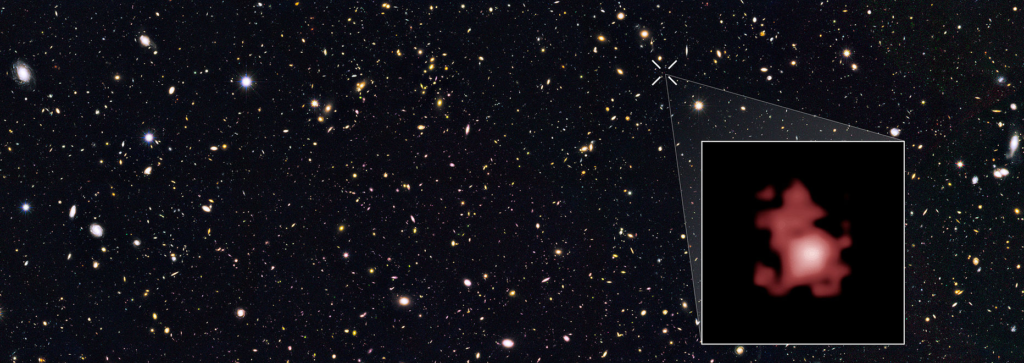
Credit: NASA, ESA, P. Oesch (Yale University), G. Brammer (STScI), P. van Dokkum (Yale University), and G. Illingworth (University of California, Santa Cruz), Public domain, via Wikimedia Commons
What is this intensity mapping?
Catch’em all
As compared to the measurement of single galaxies, intensity mapping measures the sum of all radiation reaching us over larger sky areas and of a certain ‘colour’ or wavelength. The fluctuations in intensity will tell us about the properties of both galaxies and the gaseous intergalactic medium between that caused them. The beauty is, as there is no need to resolve single objects, and as we pick up all radiation components (also the more diffuse radiation outside of galaxies), the signal is increased and we can detect radiation from higher redshifts (or further back in time). At the same time because we pick up all the radiation that is there, we are not biased for example towards the brightest or largest sources. The whole idea works a little bit like impressionist art, where close-by only patches of colour start to form larger structures, landscapes and persons, from afar.
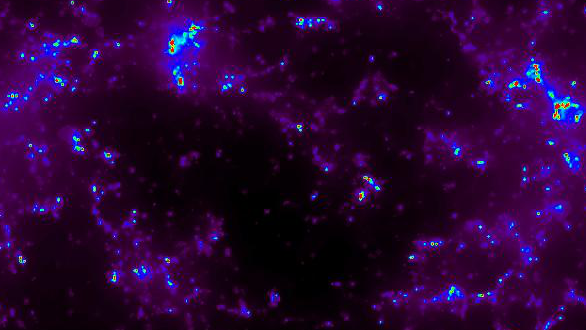
Credit: Caroline Heneka et al 2017 ApJ 848 52
© 2017. The American Astronomical Society. All rights reserved.
Now we go out and watch the first galaxies
You may wonder why we do not have more of these intensity maps yet? Indeed, this type of large-scale low-resolution measurements only starts to be popular now as the Epoch of Reionization has become a new frontier in astronomy. At different wavelengths of of electro-magnetic spectrum, for example the Square Kilometre Array (SKA) as an interferometer at radio 21cm wavelengths, or the Spectro-Photometer for the History of the Universe, Epoch of Reionization and Ices Explorer (SPHEREx) satellite in the near-infrared, are set to start operating in the coming years. By measuring intensity fluctuations at different wavelenghts, they are sensitive to different parts and properties of the first galaxies and the intergalactic medium. For example the SKA will be sensitive to the signal from neutral hydrogen and thus, coming back to Reionization, will measure how fast the ionising regions expand, in turn telling us indirectly how strongly the first galaxies shine. Even though we won’t be able to tell how bright a single galaxy is, we will be able to tell how many galaxies have which brightness, i.e. the distribution of galaxy properties. In fact, already present-day experiments like the Low Frequency Array (LOFAR) put upper limits on the strength of the signal from neutral hydrogen (see e.g. Bradley Greig et al 2021 MNRAS 501 1), and are therefore able to rule out a scenario in which only very few and very bright galaxies drive Reionization, proving these are indeed just the tip of the iceberg of the first generation galaxies.

